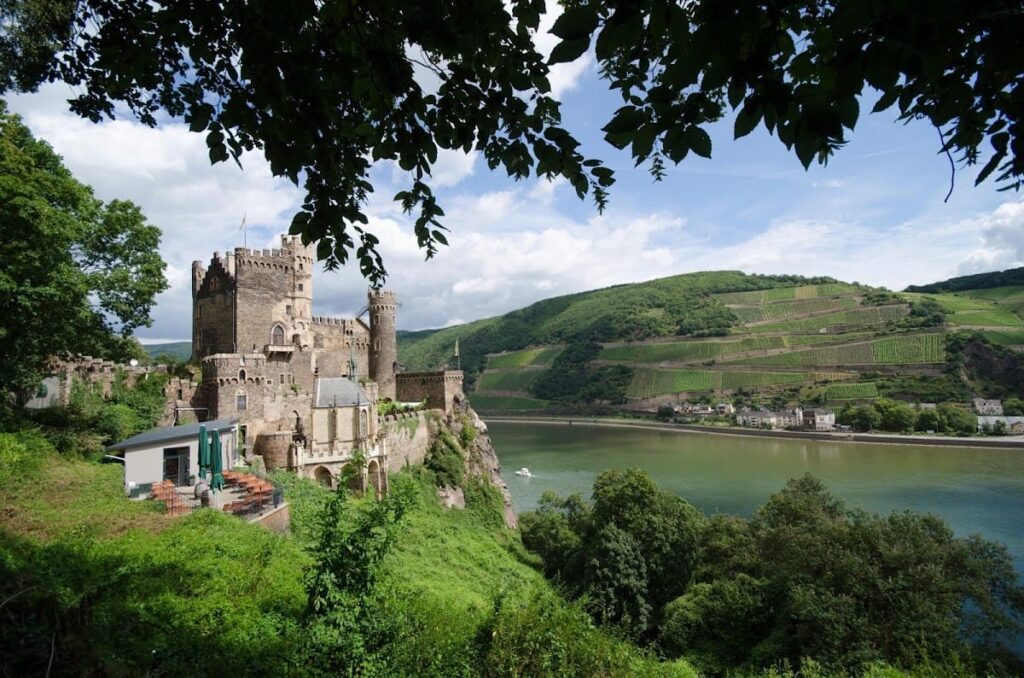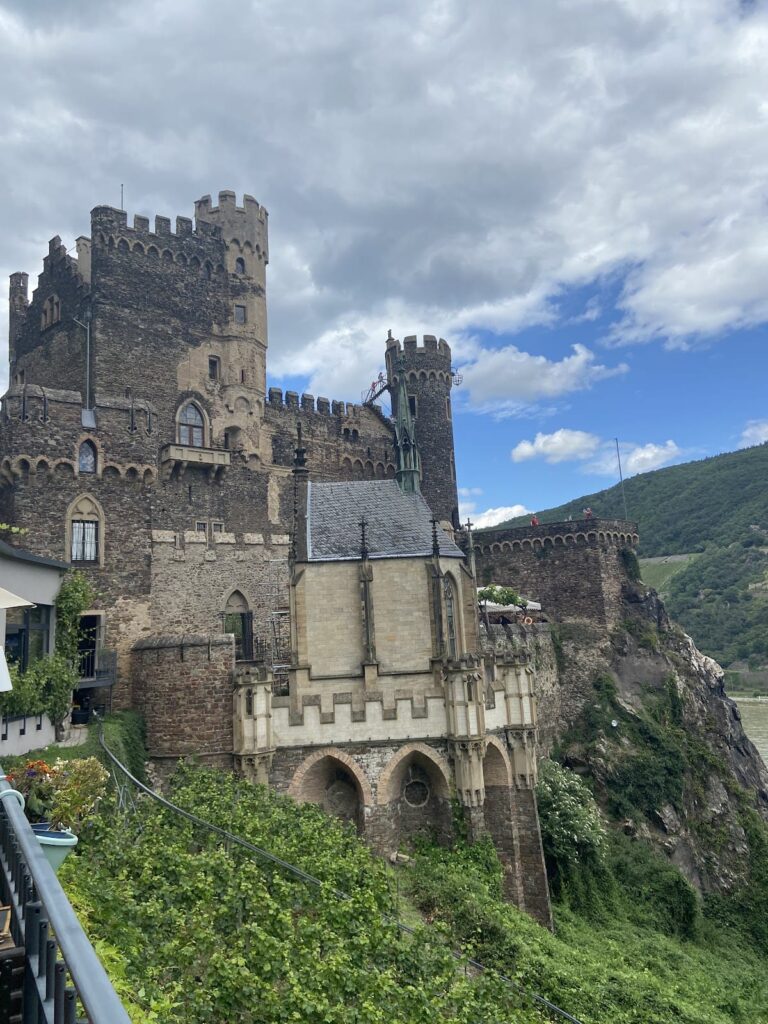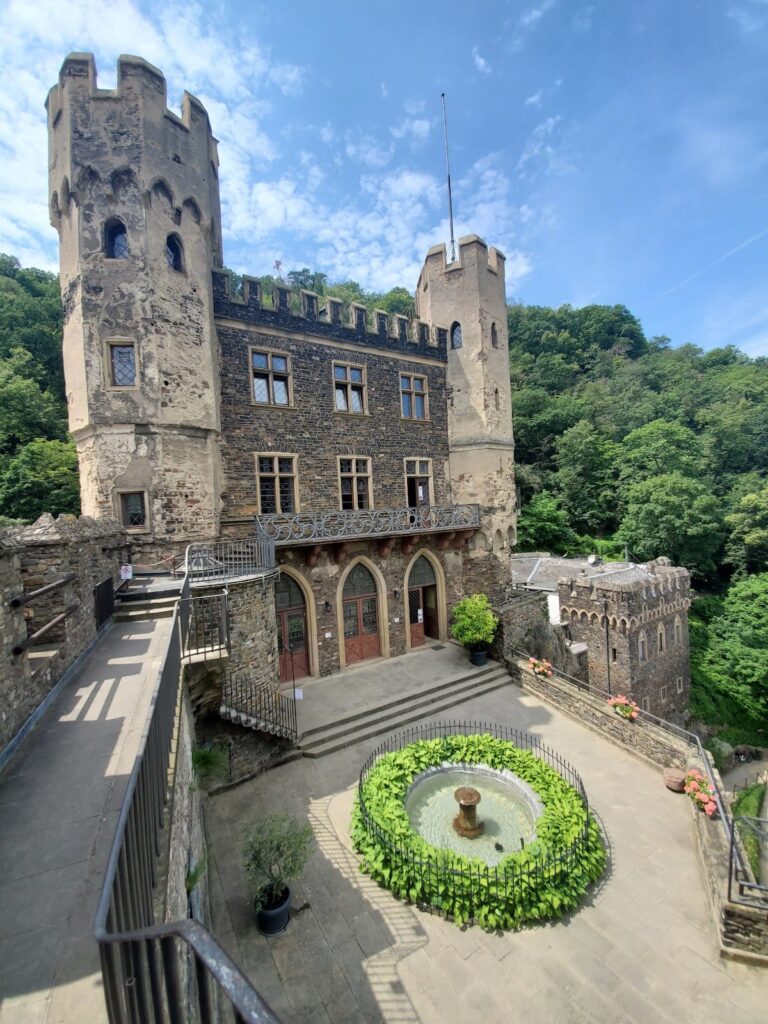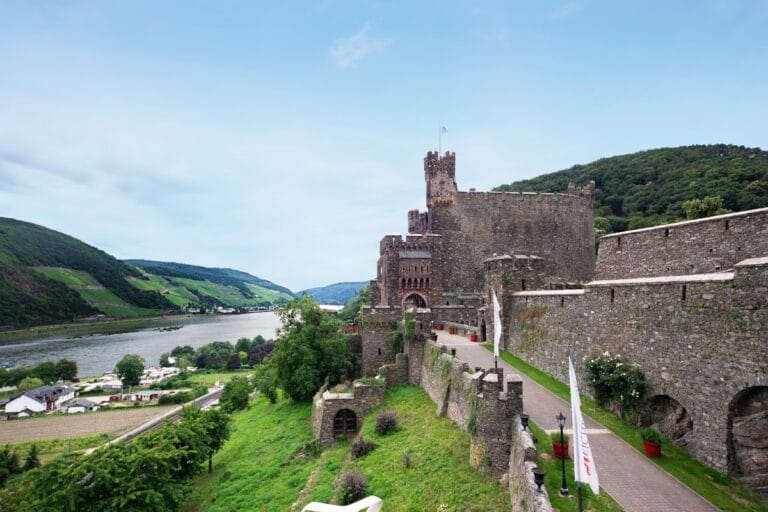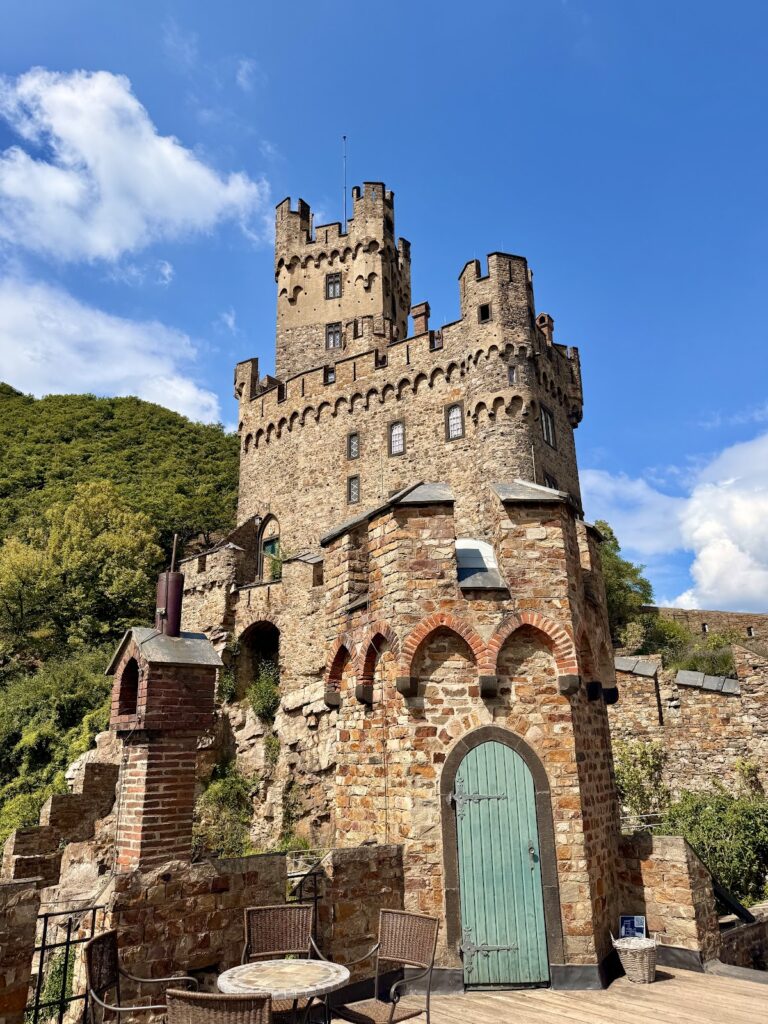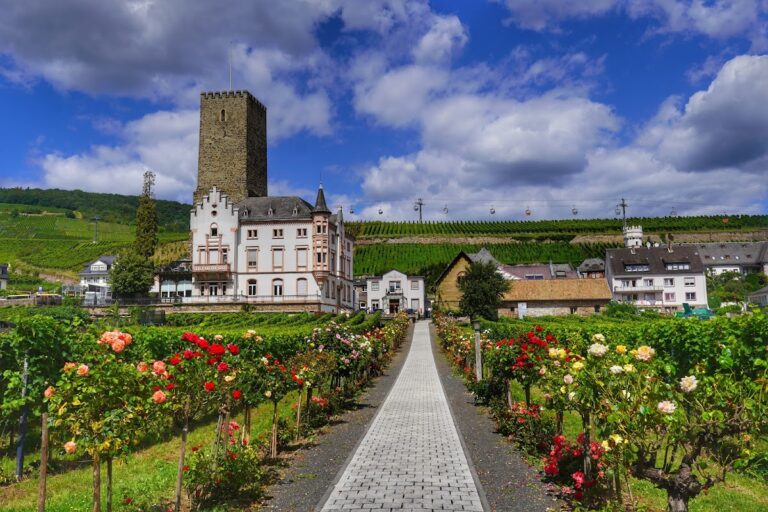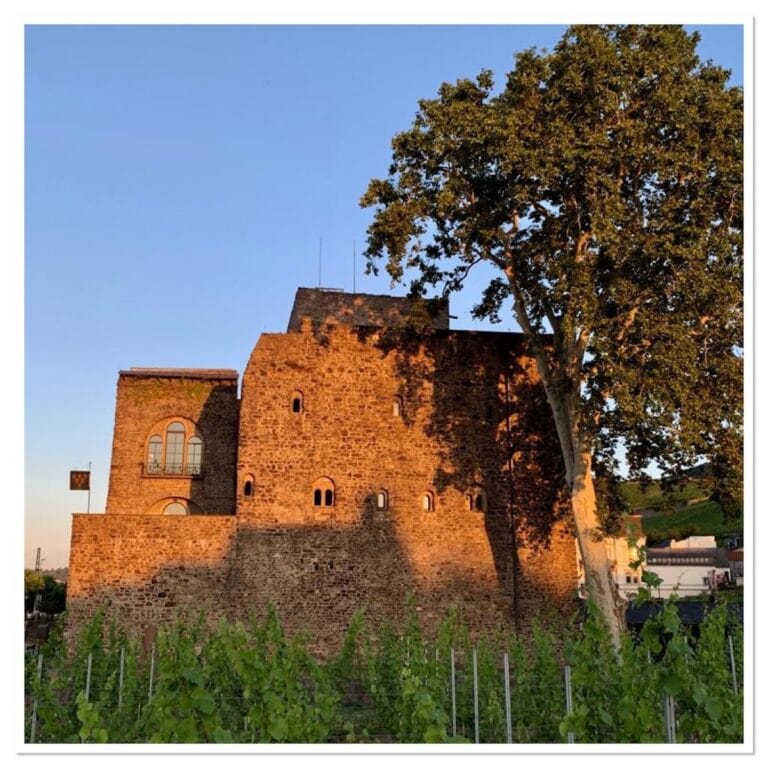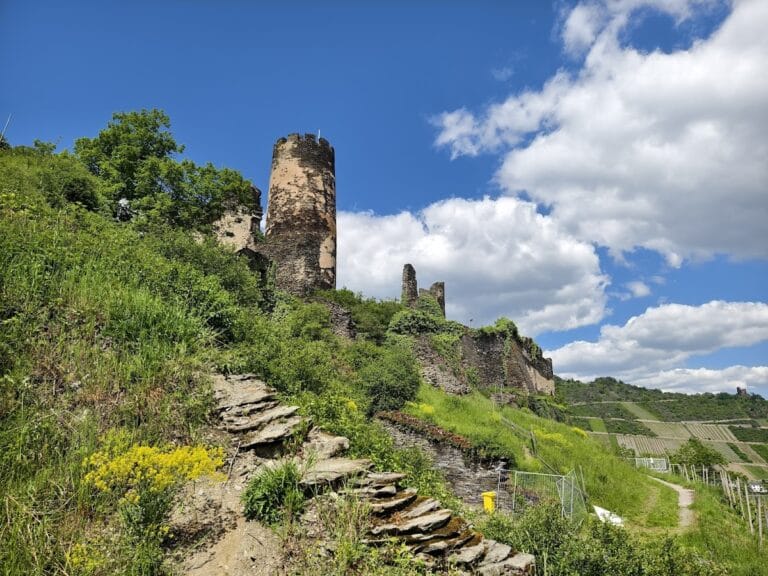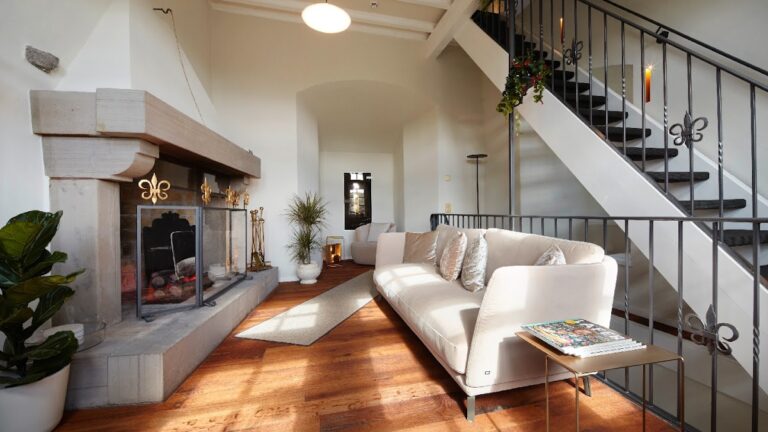Rheinstein Castle: A Historic Fortress on the Rhine River in Germany
Visitor Information
Google Rating: 4.7
Popularity: Medium
Google Maps: View on Google Maps
Official Website: www.burg-rheinstein.de
Country: Germany
Civilization: Medieval European
Remains: Military
History
Rheinstein Castle stands on the left bank of the Rhine River near Trechtingshausen, Germany. It was originally called Vaitzburg or Fautsburg and was built in the early 14th century. Dendrochronological analysis dates the oldest timbers in the southern wall to 1316 or 1317. The castle first appears in records in 1323 as property of the Archbishopric of Mainz.
The castle was likely constructed under Archbishop Gerhard II of Mainz or his successor Peter von Aspelt. Its purpose was to oversee the ruins of nearby Reichenstein Castle, which had been destroyed in 1286 by King Rudolf of Habsburg. Reichenstein had served as a robber baron stronghold, and Rheinstein was intended to control this strategic area. Around 1330, Rheinstein underwent expansion, with possible further additions in the late 15th century. However, by 1344, the castle lost much of its military importance after the Palatinate relinquished claims to Reichenstein in favor of Mainz.
By the late 16th century, Rheinstein had fallen into disrepair due to economic decline. During the Palatinate War of Succession in the late 17th century, the castle was already a ruin. French forces spared it from demolition, leaving the structure largely intact but abandoned.
After the Rhineland became part of Prussia in 1815, the castle attracted renewed interest. Architect Karl Friedrich Schinkel created a romantic restoration plan. In 1823, Prince Friedrich of Prussia purchased the ruins and commissioned architects Johann Claudius von Lassaulx and later Wilhelm Kuhn to rebuild the castle. The restoration was completed in 1829, making Rheinstein the first Rhine castle restored during the Romantic era.
Between 1839 and 1844, further additions were made, including a chapel and a guest building known as the Swiss House. Schinkel emphasized preserving the medieval parts of the castle, clearly distinguishing them from the new construction. The castle remained in the hands of Prussian princes until 1975. Notable owners included Prince Friedrich, his wife Princess Luise, and their son Prince Georg, all of whom were buried in the chapel crypt.
In 1973, Princess Barbara Irene of Prussia attempted to sell Rheinstein but was defrauded. Two years later, Austrian opera singer Hermann Hecher acquired the castle and carried out extensive restorations with support from heritage authorities. Since 2002, Rheinstein Castle has been part of the UNESCO World Heritage Upper Middle Rhine Valley.
Remains
Rheinstein Castle is built as a spur castle on a rocky promontory about 90 meters above the Rhine River. Its terraced layout follows the hillside slope, with stone as the primary building material. The complex includes the main castle, outer bailey buildings, fortifications, and a chapel.
The oldest surviving structure is a rectangular five-story residential tower with a two-story annex on its southeast corner. Defensive features include two octagonal corner turrets and a cylindrical tower attached to the annex. The castle walls are positioned on cliffs, providing natural defense. The main entrance is located on the southern wall of the annex and features a pointed-arch portal with traces of sculptural decoration. Above the wall crown, a projecting bay window is present.
Residential rooms have large rectangular windows facing the Rhine, while other walls contain mostly narrow arrow slits for defense. Some windows, especially on the southern balcony, have pointed arches. Each tower is topped with battlements, or crenellations, which slightly project beyond the wall face and are supported externally by corbelled arcades.
The southern outer bailey includes a lower two-story guard tower at the corner of the walls and a gatehouse leading into the inner courtyard. The chapel is two-storied and oriented southward, partly embedded in the sloping ground. Its lower level is partially hidden externally and features arcaded niches and small windows on the east side. The upper level is a single-nave, two-bay church with a polygonal east end, buttressed walls, and slender pinnacles.
The castle preserves restored architectural paintings and stained glass windows dating from the 14th to 17th centuries. The Rheinturm, or Rhine Tower, serves as an observation tower offering panoramic views of the Rhine Valley and the opposite Assmannshausen. The grounds include a medieval-style garden known as the Burgundergarten, which is part of the World Heritage Gardens route.
Interior spaces have been adapted for modern use, including a restaurant, a tower apartment, and a holiday flat. The castle also hosts weddings and cultural events within its historic setting.
